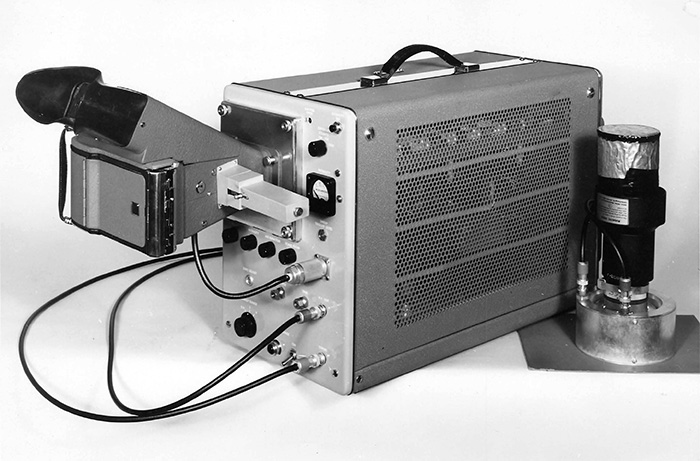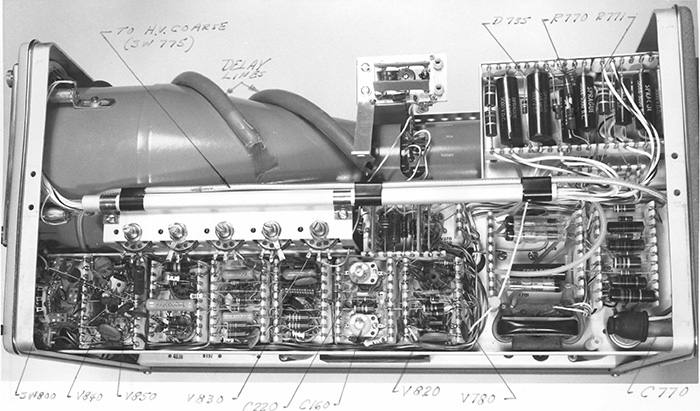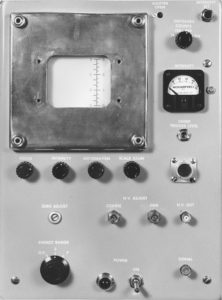Discovery of a 1958 photo of a RM5 Radiation Spectrometer caused excitement at the museum. Was this a prototype of an instrument we have never heard of? The RM5 is a gamma ray spectrometer which displays the distribution of energies of gamma rays emitted by radioactive substances.

The internal photos definitely look like Tektronix construction methods of the era.

However, the accompanying documentation revealed it to be a one-off proof-of-concept model designed and built at Oak Ridge National Labs (ORNL). ORNL wanted Tektronix to build a small quantity (6-10) for their internal use.
The top photo shows the sample from ORNL with a sodium iodide scintillation crystal mounted to the top of a photomultiplier (PM) tube whose cable was connected to a special linear amplifier in the 515A oscilloscope. The intensity of the light, and hence the signal from the PM tube, was proportional to the energy of the incoming radiation. Signals from the PM tube trigger the horizontal sweep and the Polaroid film back on the camera captured and stored the information from the 515A’s CRT. An exposure counter could be set to close the camera shutter after a fixed number of triggers (3,000; 10,000; 30,000; or 100,000).
Documents revealed Tektronix research into other radiation labs and research facilities to assess the possible market size. This study resulted in a general lack of market interest and Tektronix declined to pursue this market opportunity. When ORNL published a public Request For Quote (RFQ), other contractors came to Tektronix seeking quotes for 515As with the required modifications. When the responses didn’t meet the contractors’ very aggressive schedules, another round of requests for standard 515As with additional blank front panels to be delivered in three weeks was received.
The final chapter in the available documents was a quote for 10 standard 515As for $750 each and additional blank front panels to be used for appropriate labels without Tektronix name or logo. We presume this resulted in an order and satisfaction of the need at ORNL.
This 82 page document contains these documents along with photographs and documentation of the protype. It is an interesting read into the relationship between customers, field, and factory, research into market opportunities, and the extent that customers would modify Tektronix products to meet their need. Click on the image to view the PDF.

